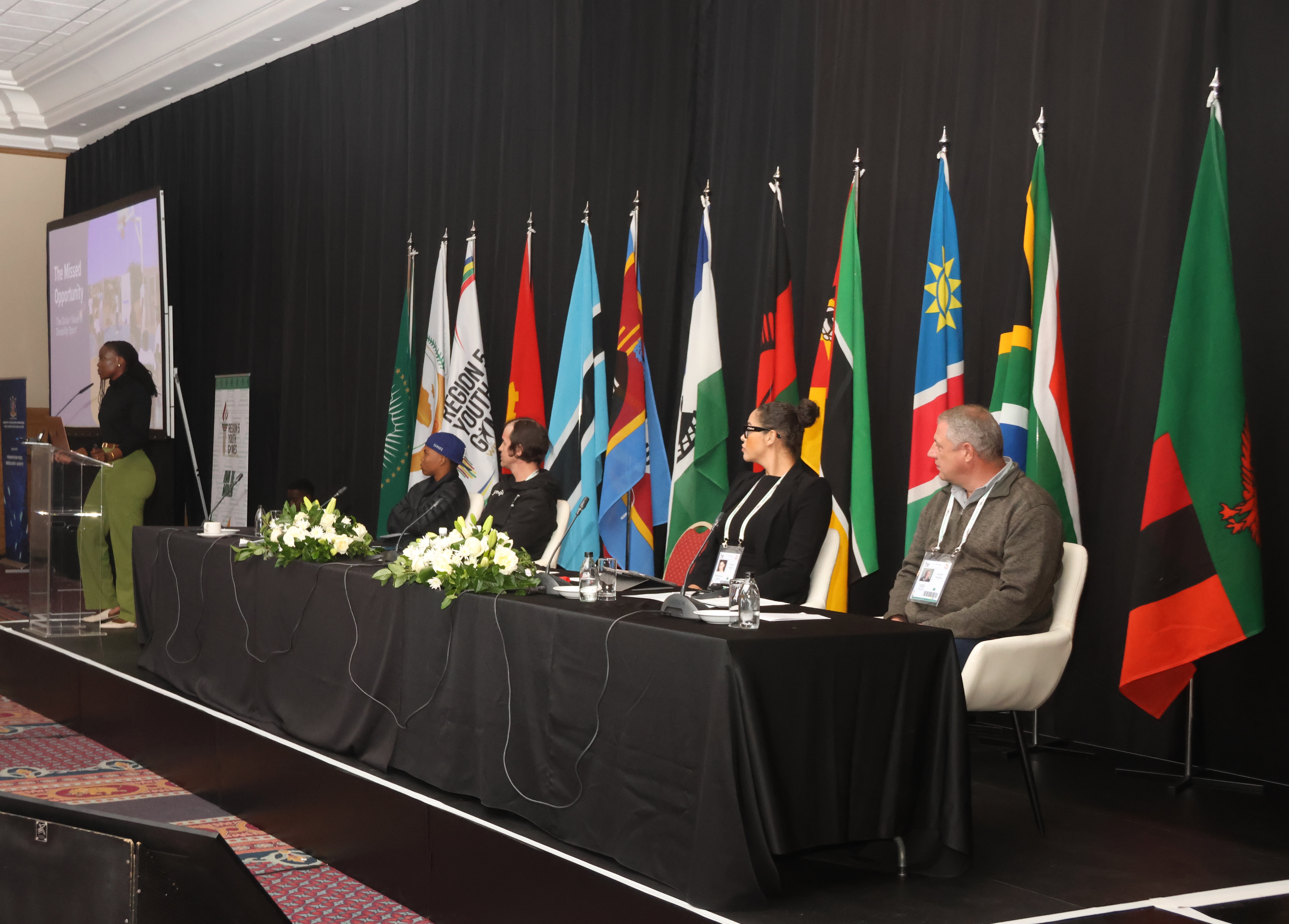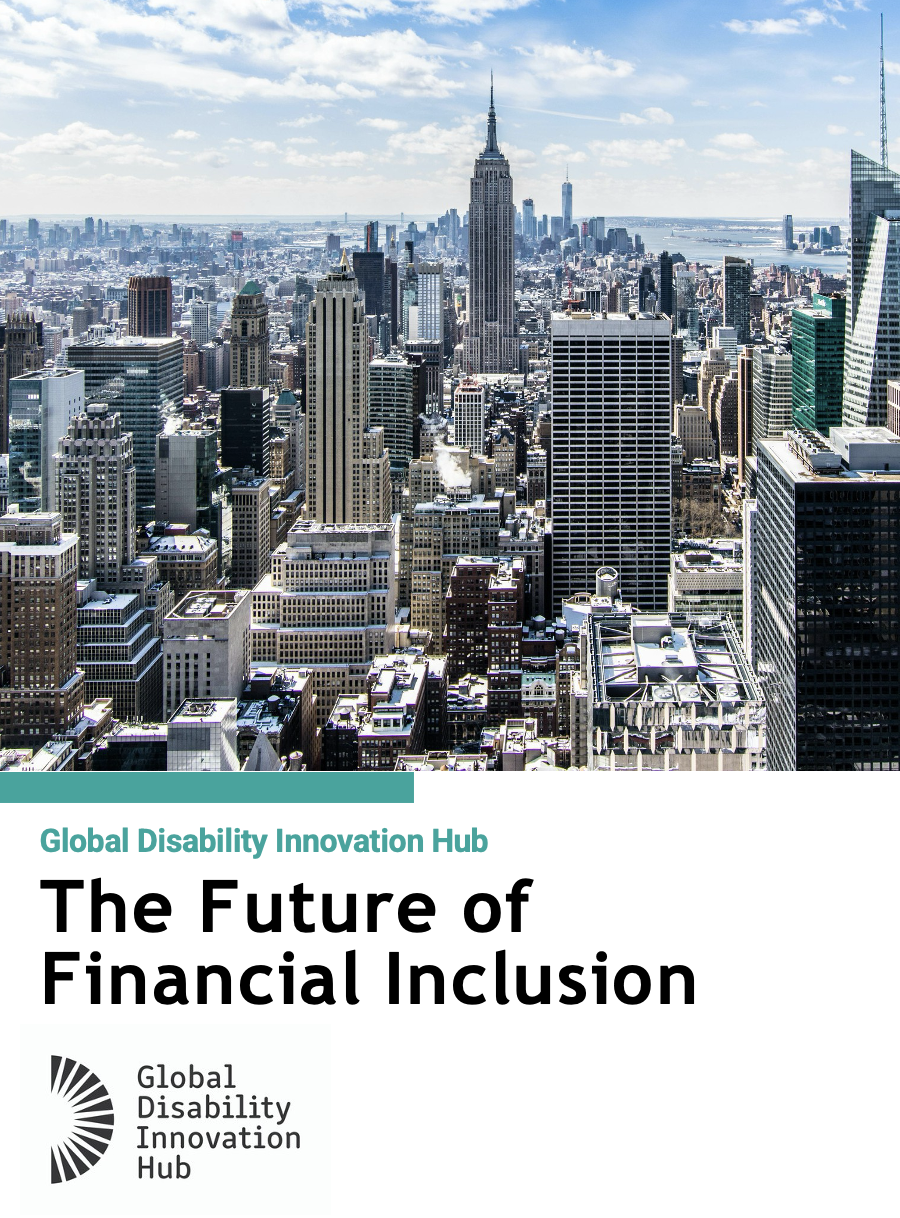Publications
-
OPD Country Level Strategy for Kenya
Global Disability Innovation HubDec. 19, 2025KenyaAT2030 ResourcesThe primary aim of this project is to develop an OPD Country Level Strategy for Kenya, titled: ‘How can technology support OPDs to build capacity, impact and influence’ - through a lens of Assistive Technologies which will include an OPD Capacity Building Framework co-created by OPDs.
-
Building a Case for Disability-Inclusive Local Climate Action.
Global Disability Innovation Hub, Mikaela Patrick, Bala NagendranNov. 21, 2025GlobalAT2030 ResourcesThe Global Disability Innovation Hub (GDI Hub) presents this White Paper titled ‘Building a Case for Disability-Inclusive Local Climate’ as an effort to synthesise available insights at this intersection and frame a narrative for future research, innovation, and action.
-

Sex and Gender in AT2030 V2 funded projects Involving Primary Data
Dr Dilisha Patel, Elizabeth Mc GuinnessSept. 30, 2025GlobalAcademic Research PublicationsThe UK International Development funded AT2030 programme, which focuses on improving access to Assistive Technology (AT) across more than 40 countries, has reached over 37 million people till the end of AT2030 V2. As AT2030 enters its third phase (v3), an evaluation of its past work from 2019-2024 (v2) highlights the need for improved inclusion of sex and gender-disaggregated data in its research outputs.
-

More Than Games: Why Sport Must Matter in the Assistive Technology Agenda
Loughborough UniversitySept. 30, 2025NamibiaCase Studies and ReportsHow participatory research, co-creation with Global South partners, and extended project cycles can lead to policy change for disability inclusion. Exploring how the African Union Sport Council Region 5 Youth Games (July 2025, Namibia) brought together 100 delegates from government, NGOs, and the Olympic and Commonwealth Sport Movements.
-
Inclusive Climate Infrastructure Design Challenge
Global Disability Innovation HubSept. 25, 2025GlobalAT2030 ResourcesWe had an enlightening session today as part of the New York Climate Action Week, exploring Inclusive Climate Infrastructure Design Challenge
-

Inclucity 4: Climate resilience and innovation for inclusive cities
Global Disability Innovation HubJuly 23, 2025AT2030 ResourcesIn this final webinar, we will be focusing on climate resilience and innovation for inclusive cities. This project focuses on the need and opportunities for disability inclusion within the climate adaptation, mitigation, resilience, and innovation narratives and actions. It situates inclusive cities within the larger just transition ambition.
-

Understanding the Impact of Assistive Technology on Users’ Lives in England: A Capability Approach
Rebecca Joskow, Dilisha Patel, Anna Landre, Kate Mattick, Catherine Holloway, Jamie Danemayer, Vicki AustinJuly 9, 2025Academic Research PublicationsThis study explores the real-life impact of assistive technology (AT) in England, drawing on findings from a 2023 Country Capacity Assessment conducted by GDI Hub and the UK Disability Unit using the WHO’s ATA toolkit. It revealed the personal significance of AT in shaping identity and confidence, while identifying systemic barriers that limit access and effectiveness. The findings emphassze the need for user-centered approaches in measuring and improving AT systems.
-

Reflective narrative of OPD's and capacity building in Pakistan
Global Disability Innovation Hub, Special Talent Exchange Program (STEP)June 30, 2025Academic Research PublicationsThis report explores the Organisations of Persons with Disabilities (OPDs) ecosystem in Pakistan, focusing on how capacity building can drive systemic change, improve access to Assistive Technology (AT), and strengthen advocacy for the rights of People with Disabilities (PwDs). Part of the AT2030 programme, funded by UK International Development, the initiative draws on policy analysis, consultations with OPDs, and engagement with government, academia, and the private sector. It identifies key challenges, highlights opportunities, and offers practical recommendations to enhance OPD effectiveness and AT access.
-

IncluCITY 3: Making Services Inclusive
Global Disability Innovation HubJune 25, 2025AT2030 ResourcesIn this third webinar, the focus was on Making Services Inclusive—exploring inclusive services and facilities, including essential services, and how to create seamless cities with connected, inclusive service ecosystems. It examined different aspects of inclusive services, including policy, training, financing, design, implementation, and monitoring.
-
Outcomes of assistive technology use by sex and gender; a scoping review
Vicki Austin, Mikaela Patrick, Dr Dilisha PatelJune 25, 2025GlobalAcademic Research PublicationsThis paper synthesises evidence on the influence of sex and gender on assistive technology (AT) outcomes, recognising AT as a tool for enabling participatory rights.
-

Consultation guide to inform the development of Dignity Kits customised for women and girls with disabilities
Patel Dilisha, Global Disability Innovation HubJune 23, 2025GlobalAcademic Research PublicationsThis new toolkit is here to help us hold impactful consultations to develop Dignity Kits specifically for women and girls with disabilities! Created with GDI Hub and UNFPA Asia-Pacific Regional Office, this guide has been refined through piloting in Bangladesh, Afghanistan, Fiji, Indonesia, and Sri Lanka UNFPA Country Offices. Their experiences are now integrated, making this a powerful tool for UNFPA country offices worldwide to ensure their offerings are truly inclusive.
-

AUSC Region 5 Namibia Youth Games
Global Disability Innovation HubJune 18, 2025AT2030 ResourcesThese videos showcase the journeys of athletes Boyson Masego, Sandra Mughogho, and Wongani Chawinga as they prepare to participate in the AUSC Region 5 Namibia Youth Games.
-

Wheelchair Provision in Nepal: Pokhara, Gandaki Province
Global Disability Innovation Hub, University of Limerick, Kathmandu UniversityJune 17, 2025NepalAcademic Research PublicationsApplying the Sustainable Community of Practice (SCOP) model to view wheelchair provision in Nepal, this study seeks to understand the landscape of overall wheelchair product and service provision, deep diving into its provincial situation. This report provides an insight on the provincial workshops conducted in the Pokhara using the SCOP model and Soft Systems Methodology (SSM) which were pivotal in collaboratively identifying context-specific solutions and stakeholder-driven recommendations.
-

Wheelchair Provision in Nepal: Butwal, Lumbini Province
Global Disability Innovation Hub, University of Limerick, Kathmandu UniversityJune 15, 2025NepalAcademic Research PublicationsApplying the Sustainable Community of Practice (SCOP) model to view wheelchair provision in Nepal, this study seeks to understand the landscape of overall wheelchair product and service provision, deep diving into its provincial situation. This report provides an insight on the provincial workshops conducted in the Butwal using the SCOP model and Soft Systems Methodology (SSM) which were pivotal in collaboratively identifying context-specific solutions and stakeholder-driven recommendations.
-

Wheelchair Provision in Nepal: Biratnagar, Koshi Province
Global Disability Innovation Hub, University of Limerick, Kathmandu UniversityJune 12, 2025NepalAcademic Research PublicationsApplying the Sustainable Community of Practice (SCOP) model to view wheelchair provision in Nepal, this study seeks to understand the landscape of overall wheelchair product and service provision, deep diving into its provincial situation. This report provides an insight on the provincial workshops conducted in the Biratnagar using the SCOP model and Soft Systems Methodology (SSM) which were pivotal in collaboratively identifying context-specific solutions and stakeholder-driven recommendations.
-

The Future of Financial Inclusion
Global Disability Innovation HubJune 11, 2025GlobalCase Studies and ReportsConsulting for global development actors and private sector partners globally, Global Disability Innovation Hub is a thought leader in inclusive practices and mechanisms. Working across consumer facing accessible services, recruitment and workforce, we are also exploring private capital as an emerging force within the international development and inclusive innovation sphere.
-

How can the principles of Human Computer Interaction inform responsible AI adoption in humanitarian practice?
Tigmanshu Bhatnagar, Maarya Omar, Davor Orlic, James Smith, Dr Maria Kett, Catherine HollowayMay 28, 2025AT2030 ResourcesOn Wed, 30 April 2025, Tigmanshu Bhatnagar presented a paper at the CHI 2025 conference, on 'Bridging AI and Humanitarianism: An HCI-Informed Framework for Responsible AI Adoption' by Tigmanshu Bhatnagar, Maarya Omar, Davor Orlic, James Smith, Catherine Holloway, Maria Kett, as part of a session on Trust and Responsibility in AI. CHI is the ACM (Association for Computing Machinery) conference on Human Factors in Computing Systems. It is the premier international conference of Human Computer Interaction. This video explores some of the issues detailed in the research.
-

The Global Disability Inclusion Report: Accelerating Disability Inclusion in a Changing and Diverse World
A Multi-stakeholder Report for the Global Disability Summit 2025May 27, 2025Academic Research PublicationsThe Global Disability Inclusion Report: Accelerating Disability Inclusion in a Changing and Diverse World was developed specifically for the Global Disability Summit 2025. It provides an overview of how the profound changes shaping our world impact the diversity of persons with disabilities and pathways to address these changes and drive inclusion across all aspects of life.
-

IncluCITY 2: Creating inclusive infrastructure
Global Disability Innovation HubMay 21, 2025AT2030 ResourcesBuilding on four years of research under the UK Aid-funded AT2030 Programme, this report draws from six diverse city case studies (Varanasi in India, Surakarta in Indonesia, Ulaanbaatar in Mongolia, Nairobi in Kenya, Freetown in Sierra Leone, and Medellín in Colombia). Through participatory co-design workshops with local partners, the research captures the on-the-ground insights, barriers, and aspirations that shape how people with disabilities experience their cities.
-

Storytelling for disability advocacy workbook
Global Disability Innovation HubMay 9, 2025GlobalAT2030 ResourcesIn recognising storytelling's transformative potential, this toolkit has been developed to empower individuals and communities to articulate their stories effectively. Through structured approaches and practical resources, participants are guided in creating compelling narratives that not only convey their lived experiences but also amplify their voices in advocating for greater access to assistive technology.
Next Page